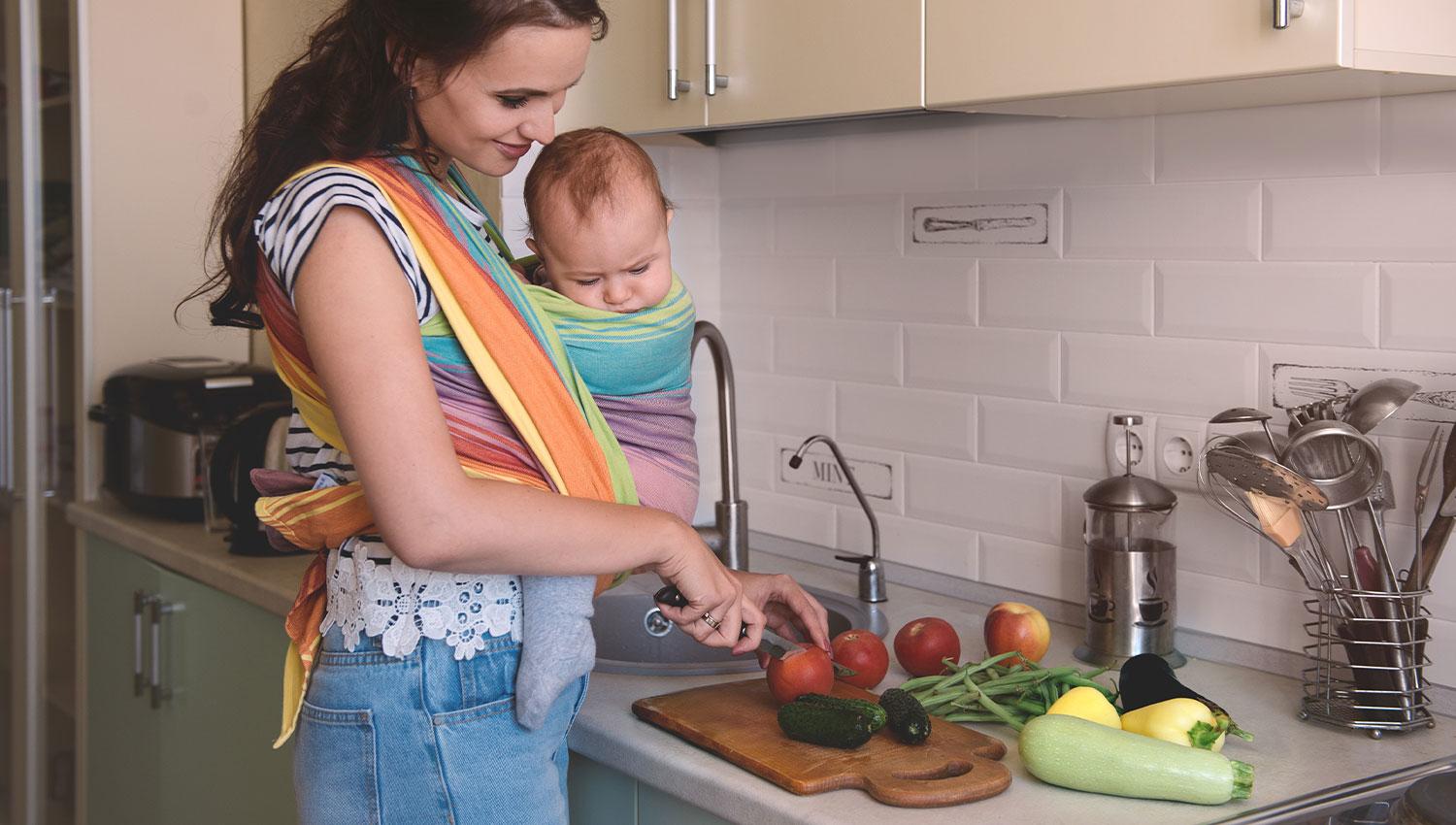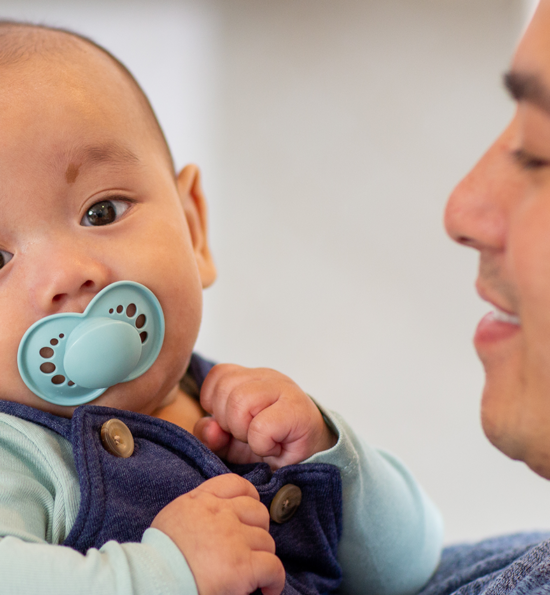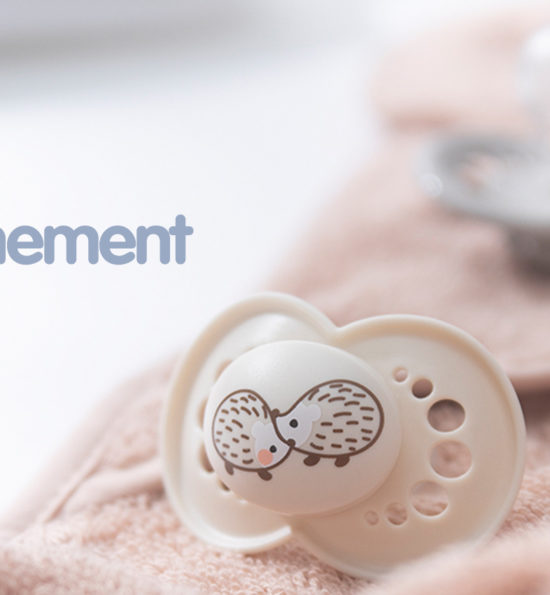
By Katie Hilton
Katie Hilton is a dual qualified nurse, midwife and health visitor and the expert adviser for MAM UK. She is also a mu’ma herself to one cheeky little man.
Common Weaning Questions
Weaning your baby is an exciting time, but it’s not without its challenges. Switching from breast milk or infant formula to solids is a big change. Whether your baby is gagging on lumpy foods or refusing to eat anything new, find out how to solve the most common weaning issues below!
1. MY BABY KEEPS SPITTING OUT FOOD
When your baby is young, they will have a reflex to thrust their tongue out every time the back of their throat is stimulated. This is known as the ‘tongue-thrust reflex’ and it will diminish as your baby gets older. Try not to worry if your baby spits food back out, this is a common weaning problem. It may not be because they dislike the food, but because they are still learning to eat. Make a few attempts, but if they are still struggling to swallow the food, it may be because they’re not ready to start weaning, so leave it for a week or two and then try again.

2. MY BABY REFUSES SOME FOODS
If your baby pulls a face and refuses a certain food on a first attempt, it’s more than likely they are surprised. This is a new experience, after all. Chances are your baby will forget and may respond differently next time they taste the same food. Perseverance is the key to this particular weaning issue. It can take eight to ten attempts for your baby to accept certain foods or tastes, so give them plenty of chances to try again. If everything else fails, go back to the basics for a few days, vegetables that have a mild flavor, such as parsnips, sweet potato and carrots or purée fruits to tempt their taste buds.
3. MY BABY DOESN’T LIKE FINGER FOODS
Introduce finger foods from 6 months onwards, when your baby’s hand–eye coordination is more developed and they are able to pick up food and put it into their mouth independently. Start with soft finger foods, such as slices of banana or avocado, and gradually introduce firmer textures as your baby seems ready. Pieces should be about the same size as your little finger so that your baby can grasp them well. Initially, your baby will only eat a small amount of these foods, as they will still be getting most of their nutrition from breast milk or formula. This isn’t a problem – just continue offering finger foods as part of the weaning process, and sit together as a family at mealtimes to encourage them to join in. Your baby learns through copying, so if they see you eating finger food, they are likely to copy you. If the difficulty relates to your baby have a slight developmental delay in their ability to pick up and move foods to the mouth, use something such as the MAM Bowl and Plate which helps to train the pincer grip when picking up food, which helps to promote your baby’s fine motor skills.
4. MY BABY GAGS ON SOLIDS
Gagging is a normal reflex that prevents your baby from choking, so if it happens, try not to panic. Check to see you are putting too much food on their spoon, or if they are putting the spoon too far into their mouth. Sometimes babies struggle with the transition from smooth purées to lumpier textures. It may take some time for your baby to get used to lumpier foods, so introduce them slowly to help avoid this weaning issue. Move from a smooth purée to mashed foods with small lumps and then on to larger lumps. Experimenting with new and varied textures early on in your baby’s development is less likely to lead to food refusal as weaning progresses. If your baby does gag, try not to overreact or lift them out of their highchair. Use lots of reassuring words and comforting body language. Parents often mistake gagging for choking, when in fact the likelihood of choking is very small. If you are concerned, talk to your doctor or healthcare visitor, who will tell you what signs to look out for and when to administer first aid.

5. MY BABY ISN’T EATING ANYTHING
In the first few weeks of weaning all you can expect is for your baby to take a small amount of food from the tip of a spoon. At this stage, it’s more about getting your baby used to the feel of food in their mouth. As they grow, your baby’s food intake should increase, but bear in mind a baby’s stomach is much smaller than an adult’s. At 3 months it is approximately 10 times smaller than an adult’s and by 1 year, around 4 times smaller. Their portions should reflect this difference. Remember, your baby will still be getting most of their nutrients from breast milk or formula. As long as they continue growing and putting on weight, there’s no need to worry. Offer a variety of foods of different tastes and textures and avoid showing frustration if your baby refuses foods or only eats small amounts. They will gradually increase their food intake over time. If you are feeling concerned speak to your health visitor for reassurance and advice.
6. MY BABY REFUSES TO BE SPOON-FED
Between 8 and 10 months, your baby may begin to refuse being fed by a spoon. This is around the age where babies become more aware of themselves. Asserting their independence by refusing a spoon is, in fact, another milestone. To make mealtimes more relaxed, try letting your baby hold another spoon while you feed them. You could also try scooping food onto their spoon and encouraging them to feed themselves. If that doesn’t work, try giving your baby soft finger foods such as steamed vegetables, cooked meats or cheese. If your baby is super independent wants to completely feed himself use something such as the MAM Dipper Set which is expertly designed for little hands. Babies may also refuse to be spoon-fed if they are feeling unwell, are teething or tired. If you have any concerns talk to your doctor or health visitor.
7. MY BABY REFUSES TO TAKE A CUP
Most babies will initially refuse to take a cup because the style of feeding and texture is normally totally different to what they’re used to. To help ease the transition from breast or bottle to a cup use something such as the MAM Trainer Cup which features a SkinSoft spout with exactly the same texture as the teat, this means your baby is much more likely to accept the cup. However, if your baby continues to refuse then stop and retry again a few weeks later.

8. MY BABY IS SCARED TO TRY NEW FOODS
It’s perfectly normal for your baby to be wary of new foods, especially once he’s been on solids for a while and is eating more meals. There could be all sorts of reasons why he’s less than keen on unfamiliar tastes and textures. All babies are different and it could be that your baby is more cautious about trying new foods because he’s cautious about new experiences in general. Offer a small amount of a new food, lots of times, to help your baby gradually get used to it. Try mixing a new food with something your baby already knows and likes, but just enough to keep offering the new taste. Go at your baby’s pace and give him plenty of time. Try not to react if your baby pulls a face when trying something new.
9. MY BABY IS A VERY SLOW EATER
First of all, try to work out why your baby is eating slowly. Is it because he’s not really hungry, or is he being distracted by something else? If you find it’s the latter, then try to remove the distraction. Big brothers and sisters are a common one, so try to encourage toddlers to play while you’re feeding. If he’s eating slowly because he’s not hungry, try feeding him a bit later and don’t give him too many snacks between meals. Don’t forget though, eating reasonably slowly can be a good habit to have because it’s encouraging your baby to enjoy his food and it also prevents overeating as his tummy has time to tell his brain that he’s full.
10. MY BABY GETS FOOD EVERYWHERE APART FROM HIS MOUTH
Exploring the feel and texture of food with his fingers is just as much a part of the weaning experience as tasting. But obviously your baby needs to be getting some of it into his stomach as well as having fun with it. For babies older than 7 months, finger foods and dips combine playing with eating. Your baby may well enjoy dropping food on the floor but don’t worry, it’s a phase he’ll grow out of. If you keep picking up or wiping dropped food, your baby will think it’s a game and keep doing it. Put a mess mat down to ease the damage and If all else fails take the plate away and try again a bit later.

Bonus: MY BABY HAS TUMMY ACHE AFTER EAING SOLIDS
The change from an all-breastmilk or an all-formula diet to a new diet that includes solid foods means that your baby’s digestive system has some adapting to do. It’s common for babies to experience some tummy trouble after starting solids. Sometimes this change can lead to your baby becoming constipated. He may also have a touch of constipation if he isn’t getting enough water, breastmilk or formula milk. Short periods of tummy troubles are nothing to worry about.
Occasionally, it can be caused by an allergy a particular food. The most common food allergies are to cow’s milk, eggs and nuts. If your baby has an immediate allergy to a food the symptoms will be obvious, your baby might be sick or have diarrhea and will likely have other symptoms including hives, mild swelling of the lips or eyes, runny nose and an itchy or irritated throat. Some babies can have a delayed allergic reaction to food, which means the symptoms won’t show straight away. Your baby may not react until at least two hours after eating, which makes it tricky to tell whether it’s food that’s causing the problem. It takes your baby’s body longer to react, because different parts of her immune system are affected. If you’re concerned about your baby, speak to your doctor or health visitor.












